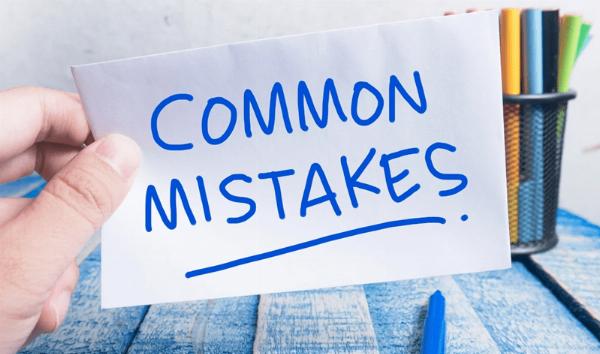 Content Gap Analysis – Find What Competitors Are Missing!
Content Gap Analysis – Find What Competitors Are Missing!
Temporary Resident Visas for Canada Multiple Entry Explained
Written by Hardik Shah » Updated on: June 17th, 2025

Canada is a popular destination for visitors, whether for tourism, family visits, or business purposes. If you are planning to visit Canada for a short period, you may need a Temporary Resident Visa (TRV), commonly known as a visitor visa. For those who anticipate multiple trips to Canada within a specific period, the Multiple Entry Visa is a practical option. It allows travelers to enter and exit the country multiple times without the need to reapply for a visa each time.
This article provides detailed information about Canada’s multiple entry TRV, including its purpose, validity, rules, requirements, and application process.
1. What is a Temporary Resident Visa (TRV)?
A Temporary Resident Visa (TRV) is an official document issued by Canadian immigration authorities that allows foreign nationals to enter and stay in Canada for a temporary period. The TRV is generally required for individuals from visa-required countries who plan to visit Canada for:
• Tourism
• Family visits
• Business trips
• Attending conferences or events
• Short-term studies (less than six months)
• Other non-permanent purposes
There are two main types of TRVs:
Single Entry Visa: Allows entry to Canada once during the visa’s validity period.
Multiple Entry Visa: Allows entry to Canada multiple times during the visa’s validity period.
The Multiple Entry Visa is the preferred option for travelers who may need to enter Canada more than once over a period of time.
2. Purpose of the Multiple Entry Visa
The Multiple Entry Visa is designed for travelers who expect to visit Canada multiple times for various reasons within the visa’s validity period. It offers flexibility, especially for:
• Business travelers who need to attend multiple meetings, conferences, or events in Canada.
• Tourists who want to visit Canada more than once within a few years.
• Family members who wish to visit their relatives in Canada on multiple occasions.
• International students or workers who may want to travel outside Canada temporarily and return without needing a new visa.
• Having a multiple entry visa simplifies the travel process by eliminating the need to reapply for a new visa for each visit.
3. Validity of the Multiple Entry Visa
The Multiple Entry Visa is typically valid for a maximum of 10 years, or until the expiration of your passport, whichever comes first. However, even though the visa might be valid for up to 10 years, each stay in Canada is limited to six months per entry. After six months, you must leave the country but can re-enter as long as your visa remains valid.
Key Points on Visa Validity:
• The visa’s expiration date is printed on your visa document.
• If your passport expires before your visa, you will need to apply for a new visa after obtaining a new passport.
• You do not need to reapply for a visa each time you leave and return to Canada within the visa’s validity period.
• Even with a valid visa, the Canada Border Services Agency (CBSA) officers have the authority to determine your admissibility and length of stay at the port of entry.
4. Rules for Multiple Entry Visa Holders
While the Multiple Entry Visa offers flexibility, there are important rules and regulations that visitors must follow:
a. Temporary Stay
A multiple entry visa does not grant permanent residency or immigration status in Canada. It allows you to enter and stay temporarily, and you must leave the country when your authorized stay period (typically six months) ends.
b. Purpose of Visit
The visa holder must comply with the purpose of the visit as declared in the visa application. For example, if you applied for a visa as a tourist, you must stick to activities related to tourism, not employment or long-term studies.
c. Prohibition on Employment
A multiple entry visa does not authorize the visa holder to work in Canada. If you intend to work, you must apply for a separate work permit. Visitors caught working illegally may face deportation and may be banned from re-entering Canada.
d. Medical Insurance
While not mandatory, it is highly recommended that visitors have health insurance coverage during their stay in Canada. Canada does not provide free healthcare to visitors, and medical costs can be extremely high.
e. Customs and Entry Requirements
Each time you enter Canada, CBSA officers will ask about the purpose of your visit. You must have the necessary documents (such as an invitation letter, proof of accommodation, or return tickets) and be prepared to answer questions.
Tip: Even with a multiple entry visa, Canadian border officers have the right to refuse entry if they believe you do not meet the requirements or that your stay does not align with the declared purpose.
5. Requirements for a Multiple Entry Visa
To apply for a Multiple Entry Visa, applicants must meet several requirements to demonstrate their eligibility and intent to visit Canada temporarily.
General Requirements:
• Valid Passport: Your passport must be valid for the entire period of your intended stay in Canada. Ideally, it should be valid for the entire duration of your visa.
• Proof of Funds: You need to demonstrate that you have enough funds to cover your travel expenses, including accommodation, meals, and return transportation. Bank statements or financial support letters can serve as proof.
• Purpose of Visit: You must clearly explain the reason for your visit (tourism, business, family visit, etc.). You may need to submit invitation letters from family members, businesses, or event organizers.
• Ties to Your Home Country: You must show strong ties to your home country to prove that you will return after your visit to Canada. These ties may include employment, family, property, or other obligations.
• Clean Criminal Record: If you have a criminal record, you may be inadmissible to Canada. In some cases, individuals with minor offenses may apply for criminal rehabilitation or a Temporary Resident Permit.
• Medical Examination: For long stays or if you are from certain countries, you may be required to undergo a medical examination to prove that you do not pose a health risk to Canadians.
• Travel History: Your previous travel history, particularly to countries like the U.S. or Europe, may positively influence your visa application. It shows that you have followed visa rules in the past.
6. Process of Applying for a Multiple Entry Visa
Step 1: Determine Eligibility
First, check if you are from a visa-required country. Nationals from certain countries must apply for a Temporary Resident Visa (TRV) before entering Canada. U.S. citizens and citizens of visa-exempt countries do not need a TRV but may require an Electronic Travel Authorization (eTA).
Step 2: Gather Required Documents
Prepare all necessary documents for your application, including:
• A valid passport
• Completed visa application forms (IMM 5257 for temporary residence)
• Proof of funds (such as bank statements or employment letters)
• Purpose of travel (such as invitation letters or trip itineraries)
• Ties to your home country (proof of employment, family, or property)
• Proof of clean criminal record (police clearance, if required)
Step 3: Complete the Visa Application
Submit your application online via the Immigration, Refugees and Citizenship Canada (IRCC) website. You will need to create an online account, fill out the necessary forms, and upload your supporting documents. The forms will include questions about your personal information, travel history, and intended length of stay.
Step 4: Pay the Visa Fee
The current visa fee for a Temporary Resident Visa (multiple entry) is CAD 100. This fee is non-refundable, even if your application is denied. Payments are typically made online during the application process.
Step 5: Biometrics
Most visa applicants are required to provide biometric information (fingerprints and photographs). After submitting your application, you will receive instructions on how and where to submit your biometrics. Biometrics can be submitted at Visa Application Centers (VACs) or other designated locations.
Step 6: Attend an Interview (if required)
In some cases, the visa officer may request an interview to verify your application details. Be prepared to explain the purpose of your visit and your ties to your home country during the interview.
Step 7: Wait for Processing
The processing time for a multiple entry visa can vary depending on the country of application, the time of year, and the completeness of your application. On average, processing times range from a few weeks to several months.
Step 8: Receive Your Visa Decision
If your visa is approved, you will receive a counterfoil visa sticker in your passport, allowing you to travel to Canada. If your visa is denied, you will be informed of the reasons for the refusal. You may have the option to reapply or address the refusal grounds.
7. Entering Canada with a Multiple Entry Visa
Having a valid multiple entry visa allows you to travel to Canada, but it does not guarantee entry. Upon arrival, a CBSA officer will verify your documents and ask questions about the purpose of your visit. If everything is in order, they will stamp your passport and provide you with a visitor record indicating the length of your authorized stay.
You must comply with Canadian laws and leave the country on or before the expiration date of your authorized stay.
A Multiple Entry Temporary Resident Visa is an excell0065nt option for travelers who anticipate making several trips to Canada over a few years. It offers the convenience of multiple entries without the need to reapply for a new visa each time. By understanding the rules, requirements, and application process, you can prepare a successful visa application and enjoy your time in Canada without unnecessary hassles.
Remember, while the multiple entry visa offers flexibility, it is essential to follow Canadian immigration rules and respect the terms of your stay.
Note: IndiBlogHub features both user-submitted and editorial content. We do not verify third-party contributions. Read our Disclaimer and Privacy Policyfor details.
Copyright © 2019-2025 IndiBlogHub.com. All rights reserved. Hosted on DigitalOcean for fast, reliable performance.














